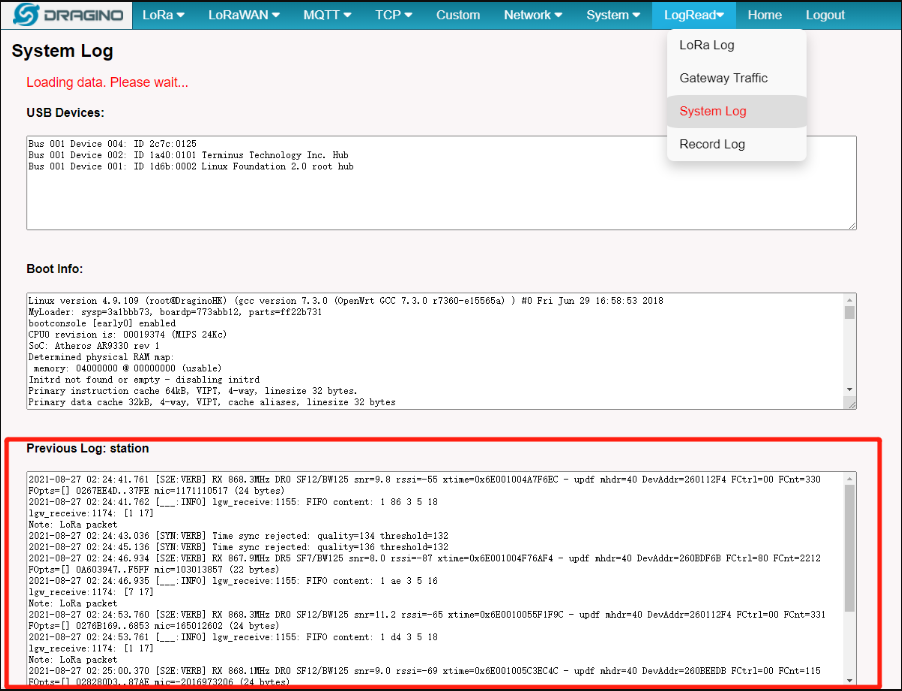AVNET/IOTConnect
Table of Contents:
1. AVNET/IOTConnect
1.1 What is IoTConnect
IoTConnect is a secured, cloud-based enterprise IoT and AI platform. It simplifies the complex. It jumpstarts the development of IoT-enabled systems, turning real-time data into actionable value-driven insights. It enables making an informed decision quickly, consequently sparking innovation.
IoTConnect brings IoT hardware, software, applications, data analytics and artificial intelligence capabilities. It comes with a feature-rich tool kit that is easy to use and significantly reduces complexity, cost and time-to-market.
In this guide, you will learn how to connect a dragino gateway to the LNS solution provided by AVNET/IOTConnect.
1.2 Login or crate an account
Login or crate an accountto get started with IoTConnect and start using IoTConnect Console.
Once you have an account,get started by following steps for adding Gateway,Device and Intergrations.
1.3 List the support products and Requirements
LoRaWAN Gateway model: Existing Gateway
2. Configure Gateway connection to IoTConnect
Below list the support products and Requirements:
What do you need to prepare?
A gateway that can access the internet normally.
For more information, please refer to the official IOTConnect documentation: Wireless Device – docs.iotconnect.io
Step 1. Log in IoTConnect
Log in to your dashboard at Avnet / IOTConnect login
Step 2. Create a template
To create a template for your organization:
- From the left navigation, mouseover the Devices module. In the middle and toward the down, select Templates.
- Along the top and toward the right, select Create Template.
- Enter data in the following fields:
- Template Code: Enter a unique code for the template. Once entered, you cannot change.
- Template Name: Enter a unique name for the template.
- Authentication Type: We offer a X.509 authentication to secure online communications and verify the identity of individuals or devices on a network.
- Device Message Version: Select the device message version. The platform displays the data type while editing a template based on a device message version.
4. Click Save to create a template.


Attributes are device properties that you want a template’s devices to measure. It can be anything from temperature, humidity, luminosity, wattage, to CO2 concentration.

Step 3. Create a LoRaWAN Gateway
To create a LoRaWAN gatway device for your organization:
- From the left navigation, mouseover the Devices module. Click Wireless Device.
- Along the bottom center toward the left, select LoRaWAN gateway.
- Enter data in the following fields:

-
- Gateway Name: Enter the display name for a Gateway device.
- EUI Code: Provide the gateway EUI that you identified in the previous section.You can find it either on a sticker at the back of the device or in the Web UI > LoRaWAN--Basic station
- Frequency Band: Choose a frequency band for the geographic region e.g. US915 for North America, EU868 for Europe.
Once you create and store gateway credentials, you will get the certificate file under the zip to onboard your gateway. Upload the following files to your gateway:
- <gateway id>.cert.pem: Gateway device certificate file.
- <gateway id>.private.key: Gateway device private key file.

4.CUPS URI and LNS URI can be found on the Settings-->Key Vaylt interface
5.Download Server Trust Certificates


Step 4. Access the gateway GUI
To configure the gateway, access it via the Web UI. To learn how to do that, refer to the Quick Start Guide for each gateway.
Users need to fill in the LNS URI and upload the Certificate.

Step 5. Configure Station
Users need to fill in the CUPS URI, LNS URI and upload the Certificate.
Note: The uploaded Private Key and Cert Pem cannot be displayed and the Service Provider does not have AVNET/IOTConnect, we will fix and add it in the next firmware release
Users can now use Amazon IoT Basic Station for testing.

Trouble Shooting
User can check the station log in the LogRead --> System Log page.

and recode the station log in the LogRead --> Recode Log page.


